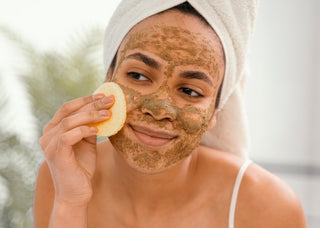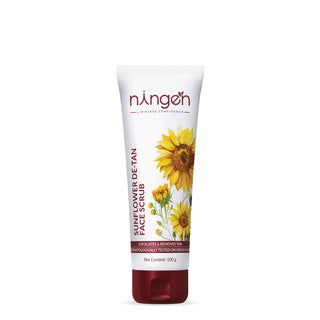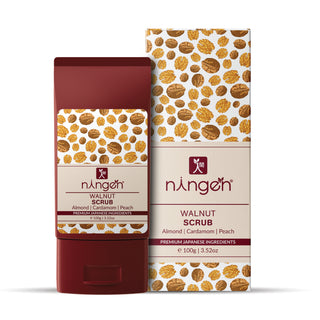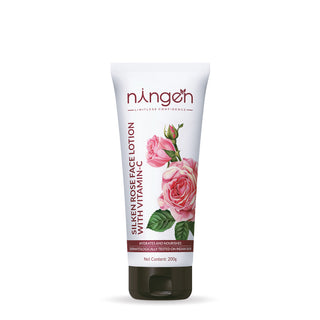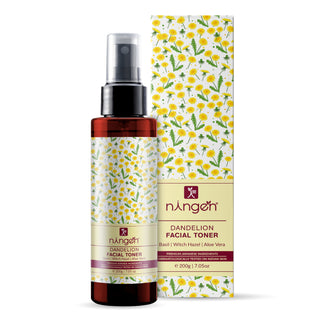Looking for smoother, brighter skin? Incorporating exfoliation into your skincare regimen is key. Don't underestimate its importance - your skin doesn't shed dead cells on its own. Exfoliating helps remove that top layer of dead skin, revealing fresh, youthful cells and enabling better absorption of active ingredients. And don't worry, you won't ruin your skin if you do it right - just be sure to use gentle, non-abrasive products.
A little science behind exfoliation
- Skin cells turnover every 30 days but as we age, this process slows down. The buildup of dead skin cells on the surface causes the skin to look dull. The edges of dead skin cells turn upwards, and this uneven reflection of light contributes to the dullness. A vibrant complexion is essential at any age, and exfoliating can help achieve this.
- Exfoliating speeds up skin cell turnover, which slows down over time. It removes dead cells, making your skin smoother and clearer with a luminous glow. Don't skip this crucial step in your skincare routine. It's beneficial for all skin types, including oily, acne-prone, dry, and sensitive skin. Surveys show that almost half of women don't exfoliate regularly. Don't be one of them!
What is exfoliation?
You can exfoliate your face in many ways, such as using a washcloth or face scrubs. Other options include microdermabrasion, face peels, and anti-aging products with acids or enzymes. By exfoliating, you can remove dead skin cells, unclog pores, and promote skin cell turnover. This will leave your skin looking smooth and radiant.
How to Exfoliate your face at home
-
Know your skin type
Before you start exfoliating, it is important to know your skin type. Different skin types require different types of exfoliants. For example, if you have sensitive skin, you should avoid physical scrubs and opt for chemical exfoliants instead.
-
Choose the right exfoliant
There are two types of exfoliants: physical and chemical. Physical exfoliants use abrasive particles to physically remove dead skin cells from the surface of the skin. Chemical exfoliants, on the other hand, use ingredients such as alpha-hydroxy acids (AHAs) or beta-hydroxy acids (BHAs) to dissolve dead skin cells. If you have dry or sensitive skin, it is best to use chemical exfoliants such as AHAs. If you have oily or acne-prone skin, BHAs such as salicylic acid are more suitable. -
Prep your skin
Before exfoliating, it is important to prep your skin. Start by removing any makeup or dirt from your face with a gentle cleanser. Then, splash your face with warm water to open up your pores. -
Exfoliate
Apply the exfoliant to your face, avoiding the delicate eye area. Use Ningen Sunflower De tan Scrub for effective results.Gently massage it into your skin using circular motions for about 30 seconds. If you are using a chemical exfoliant, follow the instructions on the product label and leave it on for the recommended amount of time. -
Rinse off
After exfoliating, rinse your face with warm water to remove any product residue. Then, splash your face with cold water to close your pores. -
Moisturize
After exfoliating, it is important to moisturize your skin. Exfoliating can make your skin more sensitive, so choose a gentle moisturizer that will soothe and hydrate your skin.
How often to exfoliate
How often you should exfoliate depends on your skin type and the product you are using. If you have sensitive skin, you should exfoliate once a week at most. If you have oily skin, you can exfoliate up to two times a week.
A quick glimpse at different exfoliation methods;
Make exfoliation a regular part of your skincare routine for an instant improvement to your skin's appearance. It removes the dull, dry layer of upper skin cells. Superficial exfoliation not only enhances skin texture, but also improves age spots and uneven skin tones.
Additionally, it allows better penetration of your serum or moisturizer. Remember to exfoliate regularly to gain long term benefits as the treatment only affects the superficial top layer of cells, which are continually shed and replaced.
There are two types of exfoliation: mechanical and chemical. Mechanical exfoliators include sponges, facial brushes, scrubs, and electronic cleansing devices.
Chemical Exfoliation
Chemical exfoliation breaks the bonds between skin cells to remove the top layer evenly. By using gentle chemical exfoliation, only shriveled, dead skin cells are removed, resulting in improved texture, tone, and pigmentation of the skin. This process also unclogs pores, leading to more youthful-looking skin. The most common acid exfoliation categories include AHA, BHA, and PHA.
Physical Exfoliation
When you physically exfoliate your skin, you're essentially removing dead skin cells mechanically. However, this method can be too rough for people with darker skin tones. Friction is used to scrub off dead skin cells, which can cause damage if not done carefully and evenly.
How to choose the best exfoliation method for your skin?
Dry and sensitive skin
Either avoid exfoliation completely or try PHA.
Oily and acne skin
Salicylic acid
Hyperpigmentation, dull or aging skin
Manelliuc acid and lactic acid
Combination skin
Mandelic and didactic acid.
Tips for exfoliating your face
- Before exfoliation, use a hydrating toner to minimize any irritation and decrease irritation from double cleanse.Checkout Ningen Dandelion Facial Toner.
- After exfoliation, use non-irritating ingredients like other low -pH ingredients.
- Avoid using retinol after exfoliation , as Vitamin A increases cell turnover and can further irritate your skin and make it sensitive.
- Use a moisturizer to help replace hydration of the epidermis.Buy Ningen SIlken Rose Lotion.
- Exfoliate at night to ensure you don't have any UV on the skin after any potential irritation.
- A common mistake is to over-exfoliate. It should be done maximum twice a week for normal to dry skin.
- If you have oily skin it is fine to use your BHA at night
- Avoid exfoliation if you have sensitive skin and/or eczema, dermatitis, broken skin barrier, rosacea.
- Ensure there is no fragrance or drying alcohol in your exfoliator.
- Ensure SPF 50 is worn during the day as skin can be more sensitive in sunlight.


